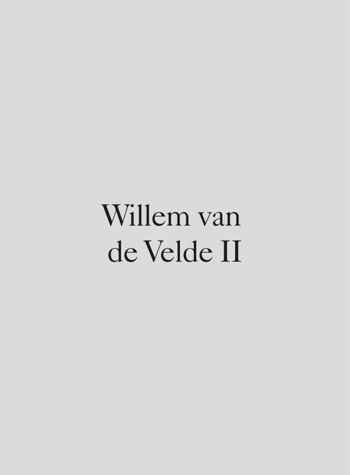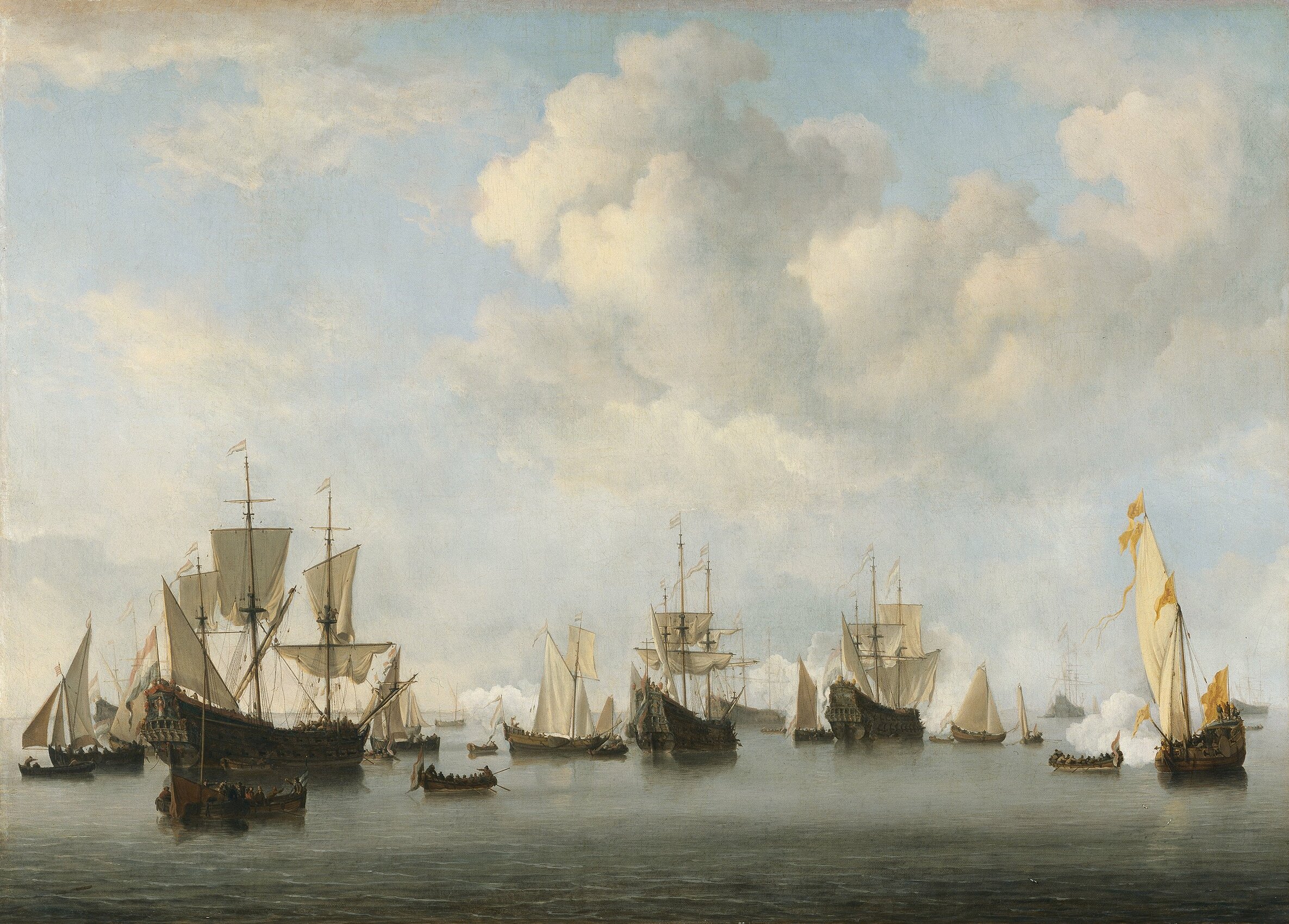Willem van de Velde II
1633 - 1707
Willem van de Velde the Younger was baptised in Leiden in 1633. His father, Willem van de Velde the Elder, was a well known marine painter. The family moved to Amsterdam in 1636 on the birth of a second son, Adriaen, who also became a painter. Willem II initially trained with his father, completing his studies in the studio of Simon de Vlieger in Weesp according to the Dutch biographer Arnold Houbraken. Father and son often went sailing, making sketches from life that Willem the Younger would use as the basis for his paintings throughout his career. His first known works date from the...
Willem van de Velde the Younger was baptised in Leiden in 1633. His father, Willem van de Velde the Elder, was a well known marine painter. The family moved to Amsterdam in 1636 on the birth of a second son, Adriaen, who also became a painter. Willem II initially trained with his father, completing his studies in the studio of Simon de Vlieger in Weesp according to the Dutch biographer Arnold Houbraken. Father and son often went sailing, making sketches from life that Willem the Younger would use as the basis for his paintings throughout his career. His first known works date from the 1650s and represent clusters of boats at anchor in calm waters, with an emphasis on silvery tones that recalls the work of Simon de Vlieger. In 1652 Willem van de Velde II married Petronella le Maire in Amsterdam, but eighteen months later they began divorce proceedings. He married for a second time, to Magdalena Walravens in 1656. The Van de Veldes worked in Amsterdam until 1672 when the war with England was renewed and the French invaded Holland, at which point they moved to London. In England they enjoyed the protection of the Duke of York and King Charles II, who paid them both an annual salary of 100 pounds: to Van de Velde the Elder for “studying and drawing naval battles” and to his son for “colouring the above-mentioned drawings”. The two artists produced these collaborative works in the Queen’s House in Greenwich where Van de Velde ran a studio. Van de Velde the Younger’s pictorial motifs evolved on his arrival in England and he began to replace his groups of anonymous vessels with specific ships from the royal fleet or men-of-war, while the calm waters of his early compositions were replaced by stormy seas and shipwrecks. After his father’s death Van de Velde II continued to run a large studio with numerous assistants and apprentices, including his sons Willem III and Cornelis van de Velde, Johan van der Hage, and Pieter Monamy, but his principal imitators are to be found among the 18th-century English marine painters.

